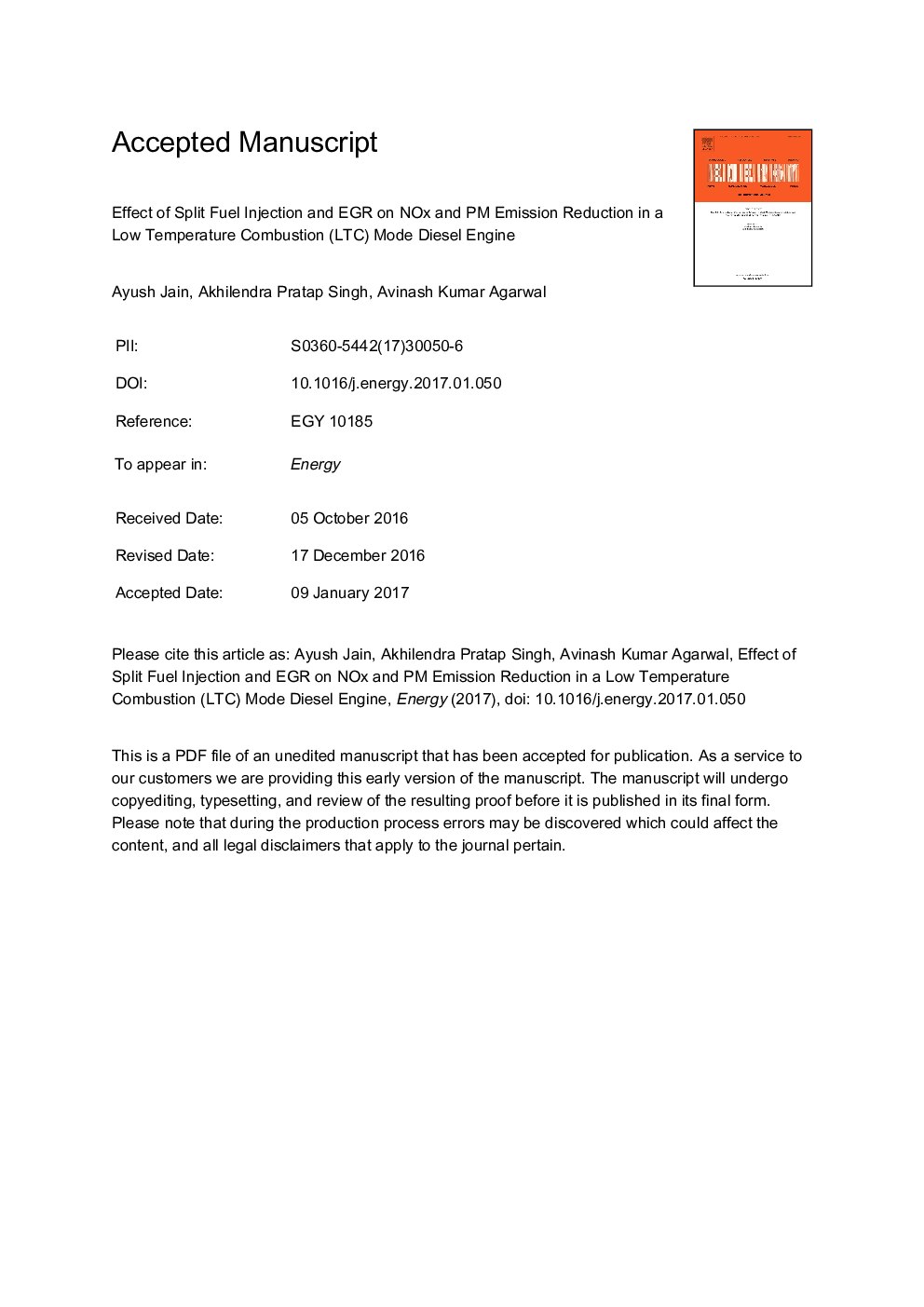| کد مقاله | کد نشریه | سال انتشار | مقاله انگلیسی | نسخه تمام متن |
|---|---|---|---|---|
| 5476253 | 1521429 | 2017 | 53 صفحه PDF | دانلود رایگان |
عنوان انگلیسی مقاله ISI
Effect of split fuel injection and EGR on NOx and PM emission reduction in a low temperature combustion (LTC) mode diesel engine
دانلود مقاله + سفارش ترجمه
دانلود مقاله ISI انگلیسی
رایگان برای ایرانیان
کلمات کلیدی
موضوعات مرتبط
مهندسی و علوم پایه
مهندسی انرژی
انرژی (عمومی)
پیش نمایش صفحه اول مقاله

چکیده انگلیسی
In this study, an advanced combustion concept 'premixed charge compression ignition' (PCCI) has been explored for application in diesel engines. PCCI combustion is a single-stage combustion process, in which a large fraction of fuel burns in premixed combustion phase resulting in relatively lower in-cylinder temperatures compared to compression ignition (CI) combustion. However at high loads, PCCI combustion results in severe knocking and higher oxides of nitrogen (NOx) emissions. This limits the applicability of this combustion concept up to medium engine loads. This limitation of PCCI combustion can be resolved by altering in-cylinder pressure-temperature history at the time of fuel injection. This can also be resolved by deploying suitable split fuel injection strategy and exhaust gas recirculation (EGR), which control combustion events such as start of combustion (SoC) and combustion phasing, leading to lower knocking and NOx emissions. To investigate the effects of various split injection strategies and EGR on PCCI combustion, engine experiments were conducted at different start of main injection (SoMI) timings (12, 16, 20 and 24° bTDC), start of pilot injection (SoPI) timings (30, 35 and 40° bTDC) and EGR rates (0, 15 and 30%). This study also included detailed particulate characterization such as particulate number-size distribution using an engine exhaust particle sizer (EEPS) and particulate bound trace metal analysis by inductively coupled plasma-optical emission spectrophotometry (ICP-OES). PCCI combustion was found to be superior at 35° bTDC SoPI timing and 15% EGR. At retarded SoPI timing (30° bTDC), PCCI combustion resulted in slightly higher NOx and particulate emissions, however at too advanced SoPI timing (40° bTDC), PCCI combustion showed relatively inferior engine performance. Application of EGR improved PCCI combustion and emission characteristics, however at high EGR, PCCI combustion resulted in inferior engine performance due to reduction in bulk in-cylinder temperatures. Overall, this study showed that PCCI combustion stability, knocking and NOx emissions can be optimized by selecting suitable combination of SoMI and SoPI timings, and EGR rate.
ناشر
Database: Elsevier - ScienceDirect (ساینس دایرکت)
Journal: Energy - Volume 122, 1 March 2017, Pages 249-264
Journal: Energy - Volume 122, 1 March 2017, Pages 249-264
نویسندگان
Ayush Jain, Akhilendra Pratap Singh, Avinash Kumar Agarwal,